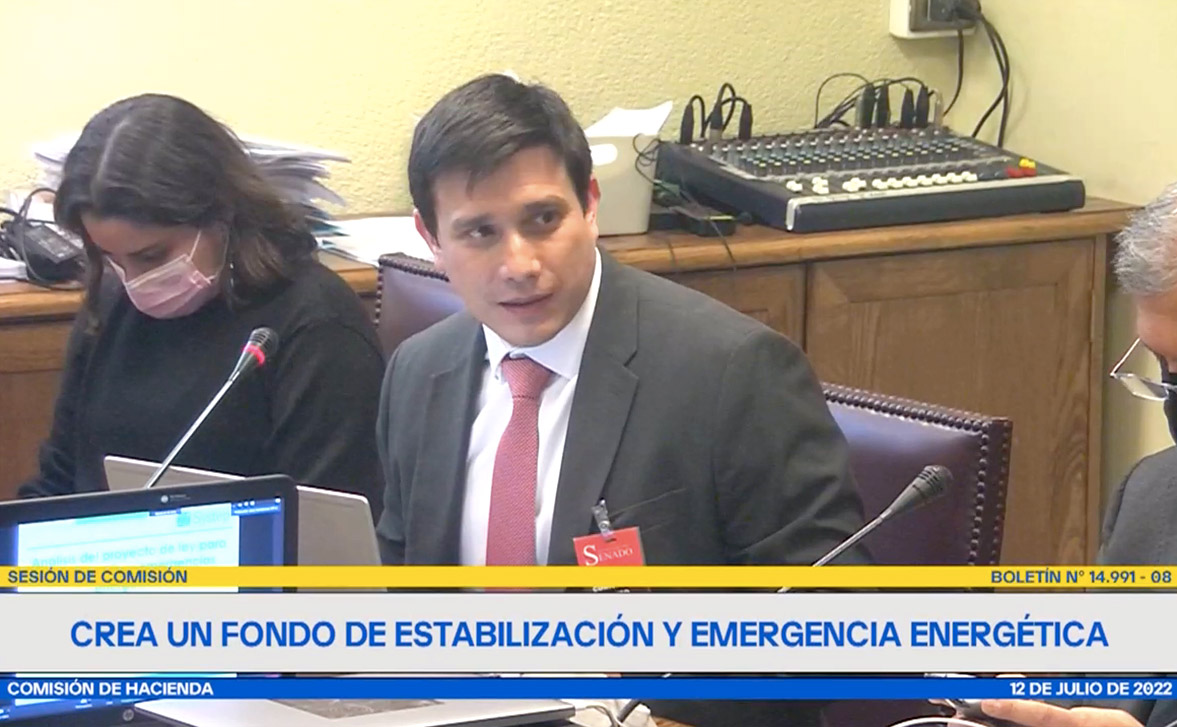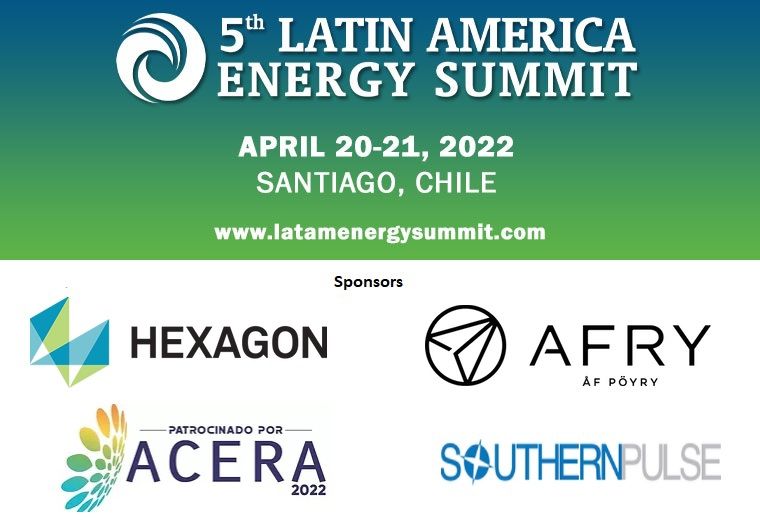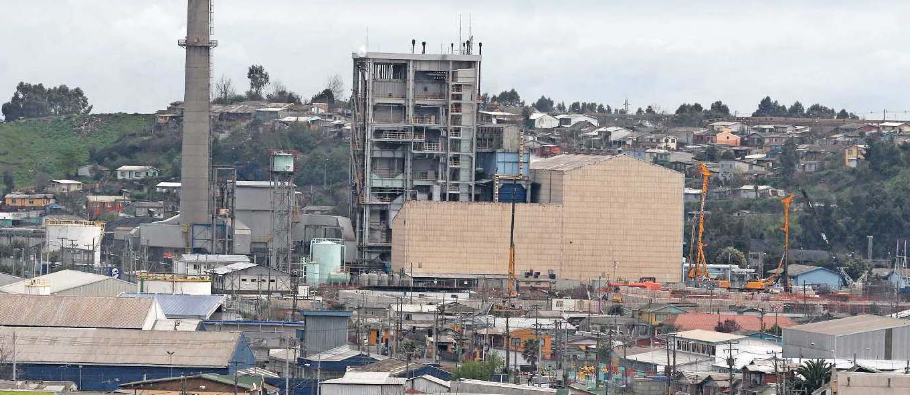
Source: Diario Financiero
According to the analysis of the consulting firm Systep, there will be transitory increases that could be significant depending on the exchange rate or inflation, the first being in January of next year. It is not until 2028 that the price drops will be experienced.
Although electricity tariffs have been frozen for more than two years under the stabilization mechanism (PEC law), several factors are pushing up the system’s values.
1. Rising CPI
First, the energy component in the tariff for regulated customers has been fixed since 2019, indexed only by CPI, which in recent months has been rising above the Central Bank’s long-term target of 3% per year.
In this scenario, according to the consulting firm Systep, a 3.1% increase in energy and power prices for customers subject to price regulation is expected for January of next year. The firm clarifies that these values should have been in force since July of this year, but have not entered into force due to a delay in the publication of the respective decree.
In the future, this could be higher, given that the latest CPI for October, accumulated over 12 months, is already at 6%.
Exchange rate
The second relevant factor is the exchange rate. The stabilization mechanism seeks to postpone increases measured in pesos, accumulating balances in dollars for each company, under the assumption that in the future the entry into force of new, cheaper contracts will partially offset the accumulated balance.
According to the latest Preliminary Technical Report for the Average Node Price Setting for January 2022, published last October, the National Energy Commission (CNE) projects that the accumulated balance of this fund will reach US$ 1,332 million by June of next year, 99% of the US$1.35 billion limit.
what are the factors that are pushing this limit? Mainly the increase in the exchange rate, since contract prices are denominated in dollars. Thus, since prices in pesos can only be indexed by CPI, increases in the exchange rate that cannot be passed on to customers must be accumulated in the balances per generating company.
And although higher PEC prices due to local inflation result in higher revenues, this helps to accumulate a lower balance, this would not be enough to offset the larger impact of the higher dollar and, to a lesser extent, the nominal increase in tariffs due to the indexation of contracts.which depends mainly on the U.S. CPI. This indicator, which represents inflation in that country, has been rising above the Federal Reserve’s target, which is around 2% per year.
3. Increase in contract prices
According to Systep, the PEC price is stabilized considering the portfolio of contracts that distributors had as of January 2019. However, this has been changing as agreements awarded in 2015 have been added and will continue to be added from the 2017 and this year’s competition .
Although the prices achieved in the bids have been declining, they are in dollars. For this reason, they emphasize that “if the exchange rate increases, the compensatory effect in favor of the payment of balances is reduced, since the rates are stabilized in pesos”.
In addition, most of them, especially for solar and wind plants, are indexed to U.S. inflation. Thus, it is estimated that due to these two factors, prices achieved in October 2015 have risen approximately 30% measured in pesos, while that of 2017 is already up 25%. Measured in dollars, the variations would be 13% and 10%, respectively.
4. Eventual increase in stabilized prices
Systep warns:“Further increases in the CPI and in the price of the dollar may result in the need to increase the stabilized prices, so that the limit of US$ 1,350 million is not exceeded”.
According to the rules of the PEC, as of July 1, 2023 no more balances can be accumulated and from 2025 the CNE should include a projection of what is owed, implementing a price escalation factor with a view to extinguishing the balances by the end of 2027.
Eventually the PEC will have to increase so as not to exceed the limit of the accumulated balance allowed and, from 2025 onwards, the PEC may increase further so as to extinguish all accumulated balances by December 2027, says the manager of the Markets and Regulation area, Pablo Lecaros.
For example, with an exchange rate of $815 per dollar, it could be the case, they point out, that the authority would have to increase the SGP during the second half of 2022, provided that the limit of US$ 1.35 billion is not exceeded. This is supported by the latest projection of balances from the CNE mentioned above.
“In this situation, it could happen that, for example, a customer with a BT1 tariff in the commune of Santiago, with a consumption of 200 kWh, could see an increase in the cost of energy of between 7% and 9% during that semester compared to the tariffs in force today,” they estimate.
And it adds that, in the same case described above, as the balances should be extinguished by December 2027, “an increase of between 20% and 24% in the cost of energy could be observed in the first half of the year 2025 with respect to the tariffs in force today”.
5. Inheritance for the new government
Lecaros assures that “although tariffs should decrease from 2028, before that there will be transitory increases that could be significant, depending on the exchange rate”.
This is a problem that the next government will inherit and the legislators will have to make the decision to allow tariffs to be raised or to extend the mechanism, which already currently considers a cap that the companies stop collecting for some years, but which could be insufficient”, says the expert.
Lecaros clarifies that, once the stabilization mechanism ends in December 2027, “tariffs should go down (assuming a constant exchange rate) since the balance will have been paid and cheaper contracts should be in place”.
When consulted, the CNE commented that inflation has an effect on electricity tariffs, as well as on all sectors of the economy. “Inflation and the exchange rate are structural issues of the economy that will undoubtedly have an effect on tariffs,” they said.
On the possibility that the authority may have to increase the PEC during 2022 as long as the limit is not exceeded, they indicated: “The size of the stabilization fund was defined by law and calculated for a transitory period of exchange rate instability”.



